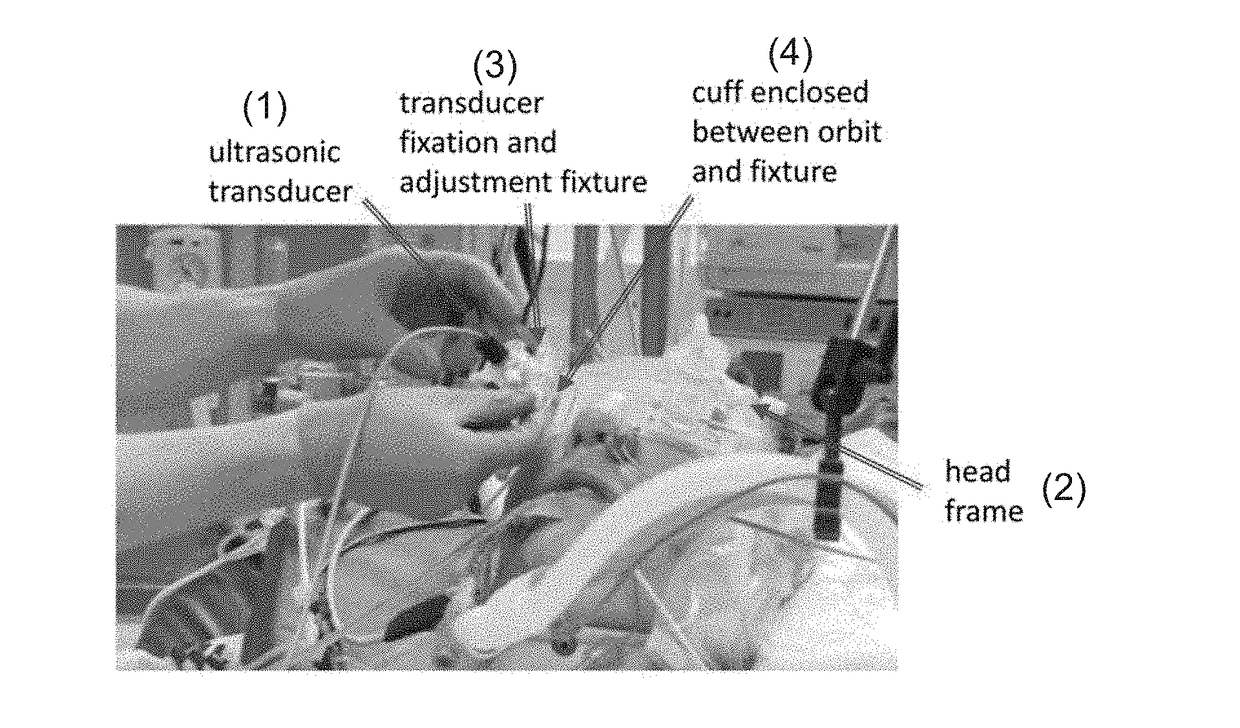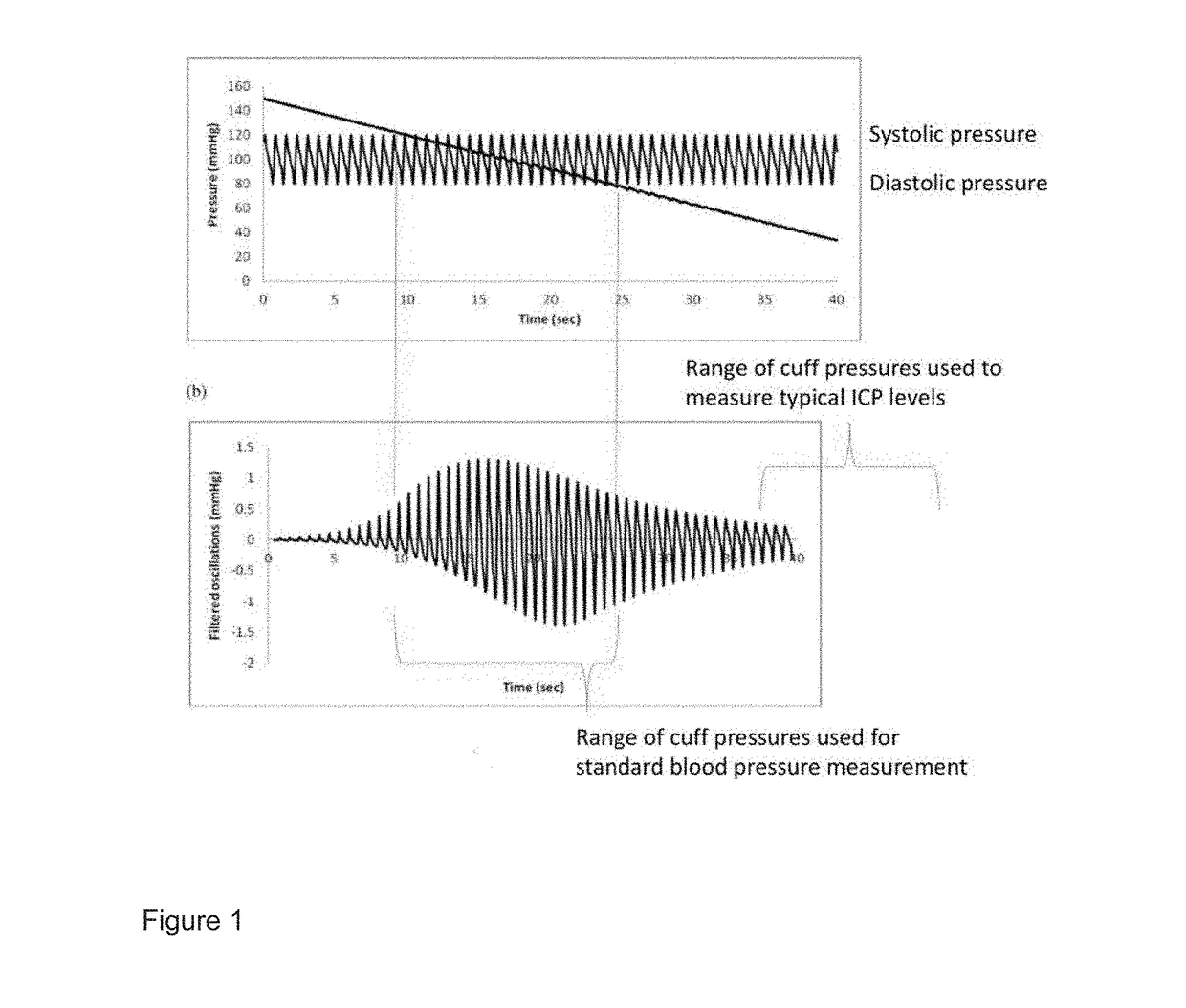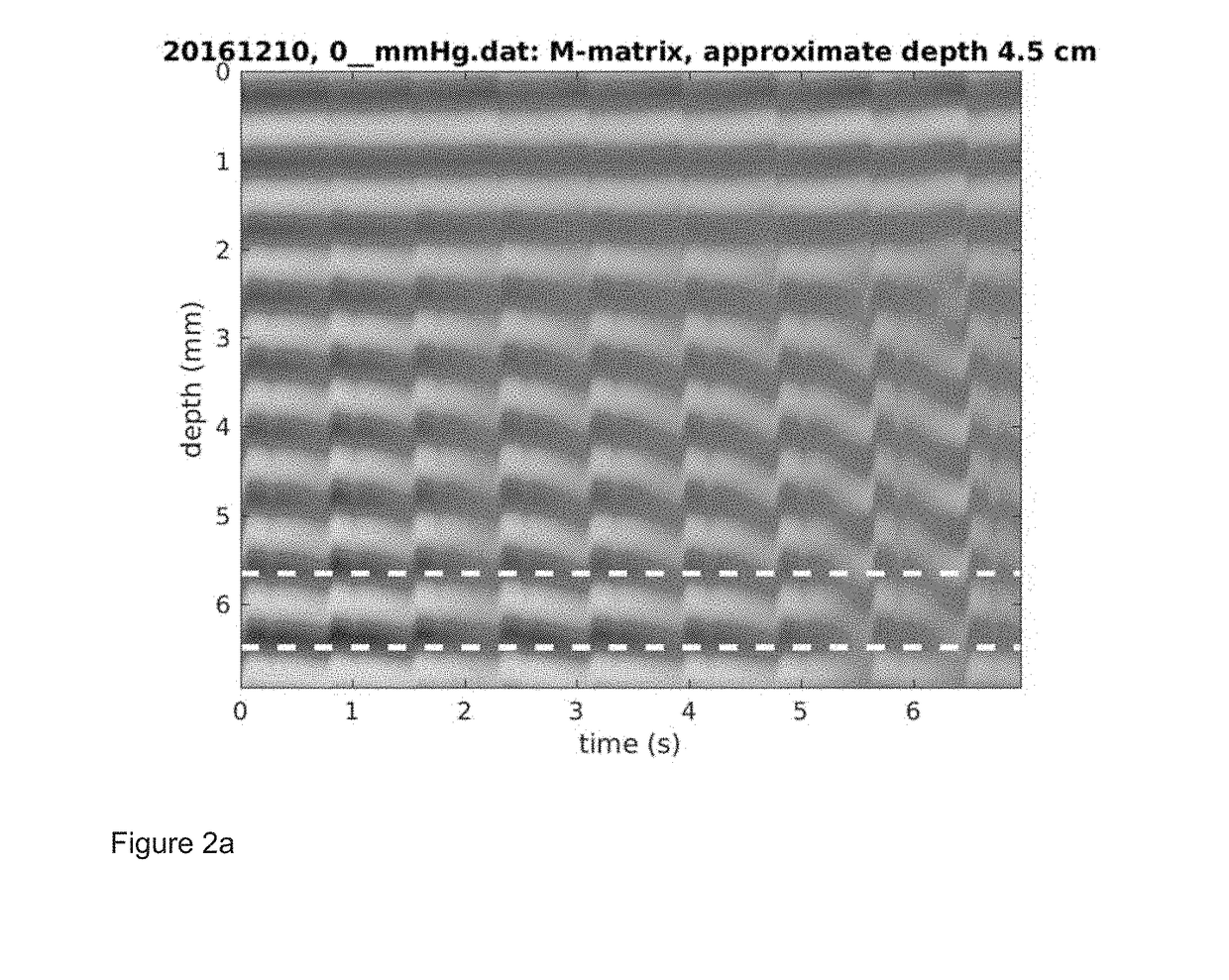Apparatus And Method For Non-Invasive Determination Of Intracranial Pressure
a non-invasive measurement and intracranial pressure technology, applied in applications, diagnostic recording/measuring, ultrasonic/sonic/infrasonic image/data processing, etc., can solve the problem of insufficient signal quality of doppler flow signals to allow determination of icp, and the signal-to-noise ratio (snr) of acquired signals is too low, so as to improve signal fidelity and quality. the effect of quality and improved signal quality
- Summary
- Abstract
- Description
- Claims
- Application Information
AI Technical Summary
Benefits of technology
Problems solved by technology
Method used
Image
Examples
example 1
[0057]EOA measurements were taken in a subject. Clinical data were acquired using a 2 MHz single channel ultrasound system from the EOA of a subject. The external pressure was increased from 0 mmHg to 32 mmHg in steps of 4 mmHg. The M-mode matrix (ultrasound reflection amplitude-vs-depth, as a function of time) was processed using a complex correlation model to produce wall distension waveforms as described in P. J. Brands, A. P. G. Hoeks, L. A. F. Ledoux, and R. S. Reneman, “A radio frequency domain complex cross-correlation model to estimate blood flow velocity and tissue motion by means of ultrasound,” Ultrasound in Medicine & Biology, vol. 23, pp. 911-920, 1997 (“Brands”). This matrix contains as columns the raw RF echoes and differs from standard ultrasound M-mode in that the source signals are not demodulated).
[0058]FIGS. 2(a) and (b) show the M-mode matrix and the distension waveform for 0 mmHg of applied external pressure to the orbit of the eye and FIGS. 2(c) and (d) show t...
example 2
[0065]EOA and IOA measurements were taken in a second subject. The data of the Example 1 in FIGS. 2-6, suggests that the ratio of the diastolic to systolic peak amplitudes is a convenient, overall-amplitude-normalized metric that is dependent on applied pressure. The absolute pulse amplitude should be a viable measure in many cases. However, the data from Example 1 illustrates how the measured amplitude can be sensitive to, for example, the angle between the beam and the vessel, the position of the range rate within the tissue, and reverberations [clutter] in the tissue. The invention contemplates a preferred embodiment using a self-normalized metric.
[0066]To gain further data and explore the peak ratio metric, the inventors performed further measurements in the EOA and IOA of a second subject.
[0067]FIG. 7 is a chart showing the ratio of diastolic to systolic peak amplitudes measured in intracranial and extracranial ophthalmic artery of the second subject. This chart shows that the ...
example 3
[0069]Measurements were taken in a third subject using a range gate outside the OA lumen. To illustrate that it is possible to obtain potentially useful wall distension waveforms without precise positioning of the Doppler range gate within the OA lumen, the range gate was deliberately displaced so that no Doppler flow signal could be observed. FIG. 8(a) is an illustration of an M-mode matrix for 0 mmHg. FIG. 8(b) is an illustration of a distension wave form for 0 mmHg generated when using a range gate outside the OA lumen.
[0070]FIGS. 8(a) and 8(b) show that physiologically reasonable distension waveforms can be measured even though the range gate is not situated over, or even immediately adjacent to, the arterial lumen. It seems that motion of tissues nearby the OA, and ultrasound clutter, can make it easier to find useful signals, especially when a non-imaging ultrasound system is used to acquire the waveforms.
[0071]FIG. 9 shows a measurement-based model of the luminal area of the ...
PUM
 Login to View More
Login to View More Abstract
Description
Claims
Application Information
 Login to View More
Login to View More - R&D
- Intellectual Property
- Life Sciences
- Materials
- Tech Scout
- Unparalleled Data Quality
- Higher Quality Content
- 60% Fewer Hallucinations
Browse by: Latest US Patents, China's latest patents, Technical Efficacy Thesaurus, Application Domain, Technology Topic, Popular Technical Reports.
© 2025 PatSnap. All rights reserved.Legal|Privacy policy|Modern Slavery Act Transparency Statement|Sitemap|About US| Contact US: help@patsnap.com



